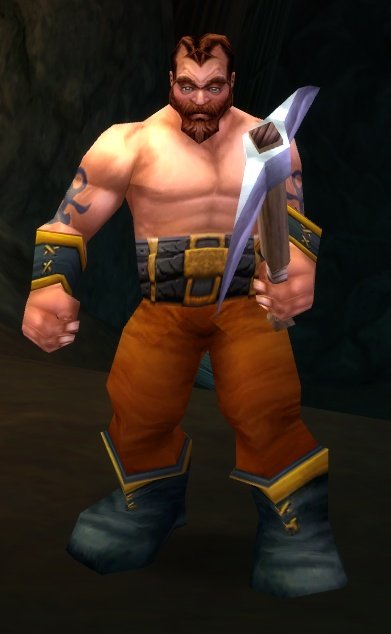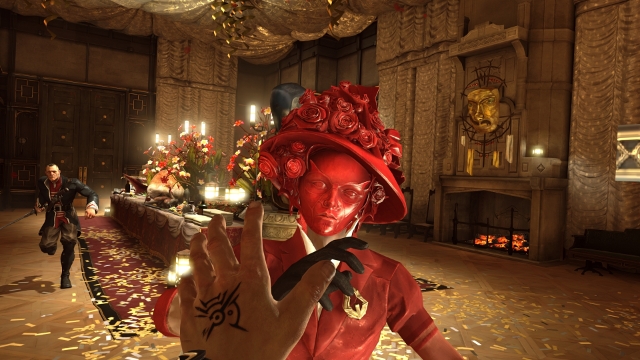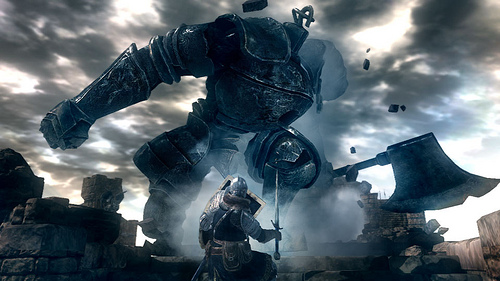Boss battles have existed since practically the beginning of gaming and they have all followed a similar idea throughout the years: a big baddie that gets in the way of some major objective. In many cases they have had an overbearing role during the game’s story, with ongoing hints of their existence or of the approaching fight with them.
But there’s more to boss fights than this. They serve as a way to change up the pace of the gameplay and often offer a break from any repetitive game mechanics throughout a game. They also help push forward the storyline in most modern games as well – but more often than not, they serve as a way to change what the player is doing.
Music and Sound Design
Music and sound during a boss fight play a huge role in determining whether the boss will get your players’ adrenaline pumping. If you have a big heavy metal robot boss then you should have big heavy metal sounding equipment noises.
Nothing is less satisfying than a boss with a large weapon that only make little noises when it hits something, or a boss fight that feels empty or without urgency due to not including a music to set the tone and pace. Have a fast quick reaction fight? Use fast music to match it. More of a puzzle boss with timed careful reactions? Have calmer music but with enough of a back-tone to still set in that sense of urgency.
This may all seem obvious, but games still often get it wrong. If you have a long boss fight and the player spends more time than not in silence or repeatedly hearing unsatisfying ‘hit’ noises, it’s not going to be nearly as exciting as it could be.

Something feels a bit odd about this boss fight when it goes from no music to the sudden random ‘happy’ tunes Minecraft occasionally plays.
The Side Boss
Often in games you’ll come across an unexpected, unannounced, or very sudden side boss. Sometimes they have some significance to the storyline and other times they are simply there to change up gameplay.
As a developer, side-bosses can easily be used to help strengthen gameplay elements before taking it to ‘the next level’ later on. If you have recently introduced a gameplay aspect such as a double jump and you have already held the player’s hand for a bit, you can test them with a side-boss fight where they must utilize this new skill.
Developing a side-boss can be an enjoyable thing to do for developers as often they allow some creative freedom of their environment, the design, etc. Do be wary though not to make it so random and sudden that it becomes unfitting for the story or gameplay. Players generally don’t like things going unexplained.
The Level Design and Boss Design
In many games you may have noticed a sudden abundance of ammo or health pickups and a convenient save station right before a unusually large or laid out room. The “boss room.”
Giving the player the feeling that they are building up to work to a boss is often a rewarding experience for them. It may be rather obvious foreshadowing, but it allows the player to be prepared for the fight and will often have them excited for what they’re about to see and play.

A Save Station in Dead Space is not always a good thing.
Level designs for a boss often include a large room for many reasons. One reason is to make the player feel ‘small’ compared to the overall threat of the boss. Another is that is allows many different gameplay elements can take place in this one boss room. Whether it’s different kinds of enemies from different areas or just changing up the environment such as falling platforms and walls during a fight, they all serve to help the boss fight feel different from regular play and allow the player to feel like this event is bigger than they are.
The boss design itself often consists of someone in heavy or unusual gear that separates them from the rest of the generic NPCs. The boss will often vary in size from the normal enemies to make the player see them as a big threat. (Literally.)
These bosses often have weak points on their armor or in the environment around them, giving the player a specific target or goal to reach during the boss fight. In a first person shooter you as a developer may make this a pin-point target they need to hit only to reveal an easier bigger place. As a developer for a third person platformer you may make the goal to reach an area within a certain time limit to open valves that contribute to a much larger system.


A generic NPC in the World of Warcraft instance “Deadmines” compared to the boss of that instance.
(Image Source: www.wowwiki.com)
No matter what you make the goal, adding in these elements when developing a boss greatly help support the fight to make it feel like it means something, while also allowing you to challenge the player in the many aspects of your game’s play style.
Staying True to Established Gameplay
One of the most important things to remember when developing a boss fight is to stay true to the already established gameplay. There is nothing more frustrating to a player then to introduce or even reintroduce a gameplay concept that hasn’t been touched in a long time during a challenging boss fight. Doing this often leads to unfair, unclear, or inconsistent gameplay that the player will not enjoy.
While boss fights are often more than just “aim and shoot at this guy like you have the rest” because they are helping serve as a way to break up gameplay, it is still very important that they do not sway too far from this original gameplay.
I’m sure if you’ve played or read about Deus Ex: Human Revolution you may know that it’s entirely possible to play the game without killing anyone. You may also know that boss fights in this game completely change a player’s play style of a no-kill stealth run by forcing them into closed areas to fight and kill the bosses throughout the game.

The bosses in Deus Ex: Human Revolution can change a player’s playing style quite dramatically.
You may also know if you’ve played Dishonored that their boss fights don’t include bosses of varying sizes, health, and largely changed gameplay elements. So why do they still work?
The answer is simple: Dishonored encourages the play-style the player has chosen to play with. If a player is playing stealthily and running along rooftops, then they can continue doing exactly this to get to a boss which in turn leads to unique events compared to other playthroughs. They can silently kill these bosses or shame them in a multitude of ways that provide exciting and unique dialogue and story depending on how the player did what they did. The game rewards the player for their actions with the environment and storyline around them.

In Dishonored every enemy is as weak as the next. The only thing separating you from them is the environment and their guards.
So while it is often a great idea to change parts of the gameplay to something more unique or vary it a bit, you don’t want to ruin the way a player has been playing your game. If you offer stealth as an element of your game then allow the player to fight the bosses and accomplish their major goals through stealth. Allow the player to play how they want to.
The Difficulty
In the end though bosses shouldn’t be stepped over and easily beaten like they had or have no significance to the storyline, the gameplay, or anything such as that. It feels really underwhelming to the player to meet a big bad boss and then just destroy them with little or no challenge. This is even more true if the boss is an important character in the plot.
Boss battles should be hard but not too hard. If your game is Dark Souls you may be punishing your player for every little fault they had – and that’s great, if the player wants that. If they are playing a basic platformer, though, with deaths that are few and far between, then you shouldn’t suddenly ramp up the difficulty and force them to perform pin-point precision jumps at certain locations while previously they had large platforms to land on.
Stay true to your currently gameplay and difficulty by only increasing it a moderate amount on a boss fight. This is a hard thing to fine tune and I heavily suggest getting testers that either haven’t played your specific game up to this point or possibly even haven’t played your game type at all to test the challenge of your boss and gameplay.

In Dark Souls everything is difficult, from the environment being brutal and unforgiving to the bosses themselves.
On the other hand, some games (such as the aforementioned Dishonored) take a different approach to this: every boss can easily be “one-shot killed” just like any other NPC. This type of game pulls this off well by making the means of getting to the boss – whether through stealth, mass-murdering, or leaping from rooftop to rooftop – the major challenging element. This way, defeating the boss still feels like a real achievement.
Making It Rewarding
Finally it is important that a boss fight feels rewarding. If your boss is a major character in your game’s storyline then the boss fight should provide a significant closing or opening of a new and possibly unexpected path in the storyline. Predictable results, while often fine, can feel like a letdown if it was all a lead up to something obvious or with little ‘oomph’ behind the goal of the boss fight.
If you wish to make the players succeed in their goals (which is generally a good idea, as most people don’t want to see their character fail and feel they did everything in the game for nothing) you must be sure to include a plot point, dialogue snippet, cutscene, piece of music or similar that really push the significance of the event to the player. Beating a game or boss with an ending cutscene less than 15 seconds long and without showing the player the results of their hard work feels really underwhelming and unrewarding.

The Legend of Zedla: Ocarina of Time handles their boss fights and storyline extremely well, holding up to even today’s standards.
Conclusion
To summarize what has been covered in this article: it is important that when designing a good boss fight that you consider many existing ways bosses have been made and why they have been made that way.
Making your boss fight stay true to the existing gameplay and play styles of players helps to increase immersion, while the music and sound design set the tone. Keeping a boss fight challenging but fun requires using previously established gameplay elements a player has mastered, but upping their difficulty from what the player has previously experienced. And finally, making the boss fight rewarding by attaching an emotional connection or importance to the boss storyline-wise greatly helps the player enjoy the experience.